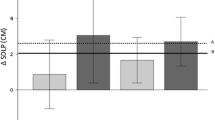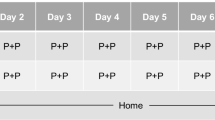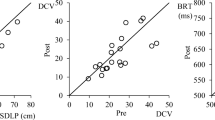Abstract
Driving a motor vehicle is central to the functional autonomy of patients with psychiatric illnesses. There have been many studies of the deleterious effects of psychotropic medications such as benzodiazepines, typical antipsychotics and tricyclic antidepressants (TCAs) on human motor skills; however, in the literature little attention has been paid to how such impairment affects driving ability. Computerised driving simulators offer a laboratory-based method of assessing the effects of specific psychotropic medications on driving abilities, in a standardised, controlled and safe manner. The purpose of the present article is to review research undertaken to-date on the effects of psychotropic medications on computer-simulated driving.
A search of various databases, including MEDLINE, EMBASE and PsycInfo, was conducted. Forty-one articles assessing the impact of psychotropics on computer-simulated driving were identified. The pooled total number of subjects assessed in these simulator studies was 1336 (mean sample size 30.36 [SD 35.8]).The most common outcome measures in the various studies were speed, steering, deviation from lateral position (tracking, lane drifting), reaction time or braking accuracy, driving errors (e.g. errors in turning, coordination, gap acceptance, signalling, following distance) and vehicle collisions. The results of the studies were quite variable; however, the most common drug-related impairments included those of tracking and reaction time. Benzodiazepines and TCAs were most commonly associated with impairment, although the level of impairment was dependent on the population studied, the dose and the time of testing relative to drug administration.
Computer-simulated driving provides a useful tool to research psychotropicrelated impairment of driving abilities. Limitations of currently available data include the lack of generalisability, standardisation and small sample sizes.


Similar content being viewed by others
References
Moskowitz H, Robinson CD. Effects of low doses of alcohol on driving skills: a review of the evidence. DOT-HS-800-599. Washington, DC: National Highway Traffic Safety Administration, 1988
Jones R, Lacey J. Alcohol and highway safety 2001: a review of the state of knowledge. DOT-HS-809-383. Washington, DC: National Highway Traffic Safety Administration, 2001
Asbridge M, Mann RE, Flam-Zalcman R, et al. The criminalization of impaired driving in Canada: assessing the deterrent impact of Canada’s first per se law. J Stud Alcohol 2004; 65(4): 450–9
Russell A, Voas RB, Dejong W, et al. MADD rates the states: a media advocacy event to advance the agenda against alcoholimpaired driving. Public Health Rep 1995; 110(3): 240–5
Hamilton WJ. Mothers against drunk driving: MADD in the USA. Inj Prev 2000; 6(2): 90–1
Beirness DJ, Simpson HM, Desmond K. The road safety monitor 2002: drugs and driving. Ottawa (ON): Traffic Injury Research Foundation, 2003
Kelly E, Darke S, Ross J. A review of drug use and driving: epidemiology, impairment, risk factors and risk perceptions. Drug Alcohol Rev 2004; 23(3): 319–44
Brookhuis KA, De Vries G, De Waard D. Acute and subchronic effects of the H1-histamine receptor antagonist ebastine in 10, 20 and 30mg dose, and triprolidine 10mg on car driving performance. Br J Clin Pharmacol 1993; 36(1): 67–70
Gengo FM, Manning C. A review of the effects of antihistamines on mental processes related to automobile driving. J Allergy Clin Immunol 1990; 86 (6 Pt 2): 1034–9
Mamdani M, Rapoport M, Shulman Kl, et al. Mental healthrelated drug utilization among older adults: prevalence, trends, and costs. Am J Geriatr Psychiatry 2005; 13(10): 892–900
Barker MJ, Greenwood KM, Jackson M, et al. Cognitive effects of long-term benzodiazepine use: a meta-analysis. CNS Drugs 2004; 18(1): 37–48
Mishara AL, Goldberg TE. A meta-analysis and critical review of the effects of conventional neuroleptic treatment on cognition in schizophrenia: opening a closed book. Biol Psychiatry 2004; 55(10): 1013–22
Oxman TE. Antidepressants and cognitive impairment in the elderly. J Clin Psychiatry 1996; 57Suppl. 5: 38–44
Thomas RE. Benzodiazepine use and motor vehicle accidents: systematic review of reported association. Can Fam Physician 1998; 44: 799–808
Leveille SG, Buchner DM, Koepsell TD, et al. Psychoactive medications and injurious motor vehicle collisions involving older drivers. Epidemiology 1994; 5(6): 591–8
Ray WA, Fought FL, Decker MD. Psychoactive drugs and the risk of injurious motor vehicle crashes in elderly drivers. Am J Epidemiol 1992; 136(7): 873–83
Etminan M, Hemmelgarn B, Delaney JA, et al. Use of lithium and the risk of injurious motor vehicle crash in elderly adults: case-control study nested within a cohort. BMJ 2004; 328(7439): 558–9
Gengo FM, Gabos C, Straley C, et al. The pharmacodynamics of ethanol: effects on performance and judgment. J Clin Pharmacol 1990; 30(8): 748–54
Arnedt JT, Wilde GJ, Munt PW, et al. Simulated driving performance following prolonged wakefulness and alcohol consumption: separate and combined contributions to impairment. J Sleep Res 2000; 9(3): 233–41
Liguori A, d’Agostino Jr RB, Dworkin SI, et al. Alcohol effects on mood, equilibrium, and simulated driving. Alcohol Clin Exp Res 1999; 23(5): 815–21
Rizzo M, McGehee DV, Dawson JD, et al. Simulated car crashes at intersections in drivers with Alzheimer disease. Alzheimer Dis Assoc Disord 2001; 15(1): 10–20
Bylsma FW. Simulators for assessing driving skills in demented patients. Alzheimer Dis Assoc Disord 1997; 11Suppl. 1:17–20
Akinwuntan AE, De Weerdt W, Feys H, et al. Effect of simulator training on driving after stroke: a randomized controlled trial. Neurology 2005; 65(6): 843–50
Vanakoski J, Mattila MJ, Seppala T. Driving under light and dark conditions: effects of alcohol and diazepam in young and older subjects. Eur J Clin Pharmacol 2000; 56(6-7): 453–8
Moore NC. Medazepam and the driving ability of anxious patients. Psychopharmacology (Berl) 1977; 52(1): 103–6
Tornros J, Vikander B, Ahlner J, et al. Simulated driving performance of benzodiazepine users. J Traffic Med 2001; 29(3–4): 4–15
Mattila MJ, Kuitunen T, Veilahti J. Related coordinative, reactive and cognitive performances as impaired by drugs and alcohol: comparison with clinical test for driving fitness. J Traffic Med 1993; 21(3): 101–14
Dureman I, Norrman B. Clinical and experimental comparison of diazepam, chlorazepate and placebo. Psychopharmacologia 1975; 40(4): 279–84
Friedel B, Sjoo S, Reker K, et al. Testing drivers taking diazepam in the Daimler-Benz driving simulator. J Traffic Med 1991; 19(1): 15–27
Linnoila M, Hakkinen S. Effects of diazepam and codeine, alone and in combination with alcohol, on simulated driving. Clin Pharmacol Ther 1974; 15(4): 368–73
Linnoila M. Drug interaction on psychomotor skills related to driving: hypnotics and alcohol. Ann Med Exp Biol Fenn 1973; 51(3): 118–24
Irving A, Jones W. Methods for testing impairment of driving due to drugs. Eur J Clin Pharmacol 1992; 43(1): 61–6
Silveira P, Vas-da-Silva M, Dolgner A, et al. Psychomotor effects of mexazolam vs placebo in healthy volunteers. Clin Drug Invest 2002; 22(10): 677–84
Tornros J, Laurell H. Acute and carry-over effects of brotizolam compared to nitrazepam and placebo in monotonous simulated driving. Pharmacol Toxicol 1990; 67: 77–80
Mattila M. Acute and subacute effects of diazepam on human performance: comparison of plain tablet and controlled release capsule. Pharmacol Toxicol 1988; 63(5): 369–74
Nichols JM, Martin F. P300 in heavy social drinkers: the effect of lorazepam. Alcohol 1993; 10(4): 269–74
Schroeder SR, Ewing JA, Allen JA. Combined effects of alcohol with methapyrilene and chlordiazepoxide on driver eye movements and errors. J Safety Res 1974; 6(2): 89–93
Stevenson GW, Pathria MN, Lamping DL, et al. Driving ability after intravenous fentanyl or diazepam: a controlled doubleblind study. Invest Radiol 1986; 21(9): 717–9
Vanakoski J, Seppala T, Stromberg C, et al. Effects of ceronapril alone or in combination with alcohol on psychomotor performance in healthy volunteers: a placebo-controlled, crossover, study. Curr Ther Res 2001; 62(10): 699–708
Willumeit HP, Ott H, Neubert W, et al. Alcohol interaction of lormetazepam, mepindolol sulphate and diazepam measured by performance on the driving simulator. Pharmacopsychiatry, 1984; 17(2): 36–43
Iudice A, Bonanni E, Maestri M, et al. Lormetazepam effects on daytime vigilance, psychomotor performance and simulated driving in young adult healthy volunteers. Int J Clin Pharmacol Ther 2002; 40(7): 304–9
Laurell H, Tornros J. The carry-over effects of triazolam compared with nitrazepam and placebo in acute emergency driving situations and in monotonous simulated driving. Acta Pharmacol Toxicol (Copenh) 1986; 58(3): 182–6
Saario I, Linnoila M. Effect of subacute treatment with hypnotics, alone or in combination with alcohol, on psychomotor skills related to driving. Acta Pharmacol Toxicol (Copenh) 1976; 38(4): 382–92
Volkerts ER, van Laar MW, Maes RAA. A comparative study of on-the-road and simulated driving performance after nocturnal treatment with lormetazepam 1mg and oxazepam 50 mg. Hum Psychopharmacol 1992; 7: 297–309
Willumeit HP, Neubert W, Ott H, et al. Driving ability following the subchronic application of lormetazepam, flurazepam and placebo. Ergonomics 1983; 26(11): 1055–61
Partinen M, Hirvonen K, Hublin C, et al. Effects of aftermidnight intake of zolpidem and temazepam on driving ability in women with non-organic insomnia. Sleep Med 2003; 4(6): 553–61
Mattila MJ, Vanakoski J, Kalska H, et al. Effects of alcohol, zolpidem, and some other sedatives and hypnotics on human performance and memory. Pharmacol Biochem Behav 1998; 59(4): 917–23
Kuitunen T. Drug and ethanol effects on the clinical test for drunkenness: single doses of ethanol, hypnotic drugs and antidepressant drugs. Pharmacol Toxicol 1994; 75(2): 91–8
Staner L, Ertle S, Boeijinga P, et al. Next-day residual effects of hypnotics in DSM-IV primary insomnia: a driving simulator study with simultaneous electroencephalogram monitoring. Psychopharmacology (Berl) 2005; 181(4): 790–8
Jauhar P, McClure I, Hillary C, et al. Psychomotor performance of patients on maintenance lithium therapy. Hum Psychopharmacol 1993; 8: 141–4
Bocca ML, Le Doze F, Etard O, et al. Residual effect of zolpidem 10mg and zopiclone 7.5mg versus flunitrazepam lmg and placebo on driving performance and ocular saccades. Psychopharmacology (Berl) 1999; 143(4): 373–9
Linnoila M. Effects of diazepam, chlordiazepoxide, thioridazine, haloperidole, flupenthixole and alcohol on psychomotor skills related to driving. Ann Med Exp Biol Fenn 1973; 51(3): 125–32
Moskowitz H, Smiley A. Effects of chronically administered buspirone and diazepam on driving-related skills performance. J Clin Psychiatry 1982; 43 (12 Pt 2): 45–55
Linnoila M, Saario I, Maki M. Effect of treatment with diazepam or lithium and alcohol on psychomotor skills related to driving. Eur J Clin Pharmacol 1974; 7(5): 337–42
Brunnauer A, Laux G, Geiger E, et al. The impact of antipsychotics on psychomotor performance with regards to car driving skills. J Clin Psychopharmacol 2004; 24(2): 155–60
Wylie KR, Thompson DJ, Wildgust HJ. Effects of depot neuroleptics on driving performance in chronic schizophrenic patients. J Neurol Neurosurg Psychiatry 1993; 56(8): 910–3
Bech P, Thomsen J, Rafaelsen OJ. Long-term lithium treatment: effect on simulated driving and other psychological tests. Eur J Clin Pharmacol 1976; 10(5): 331–5
Hatcher S, Sims R, Thompson D. The effects of chronic lithium treatment on psychomotor performance related to driving. Br J Psychiatry 1990; 157: 275–8
Hindmarch I. Three antidepressants (amitriptyline, dothiepin, fluoxetine), with and without alcohol, compared with placebo on tests of psychomotor ability related to car driving. Hum Psychopharmacol 1987; 2: 177–83
Hindmarch I, Harrison C. The effects of paroxetine and other antidepressants in combination with alcohol in psychomotor activity related to car driving. Hum Psychopharmacol 1988; 3: 13–20
Mattila MJ, Patat A, Seppala T, et al. Single oral doses of amisulpride do not enhance the effects of alcohol on the performance and memory of healthy subjects. Eur J Clin Pharmacol 1996; 51(2): 161–6
Berthelon C, Bocca ML, Denise P, et al. Do zopiclone, zolpidem and flunitrazepam have residual effects on simulated task of collision anticipation? J Psychopharmacol 2003; 17(3): 324–31
Linnoila M, Mattila MJ. Interaction of alcohol and drugs on psychomotor skills as demonstrated by a driving simulator. Br J Pharmacol 1973; 47(3): 671–2P
Mattila MJ, Vanakoski J, Mattila-Evenden ME, et al. Suriclone enhances the actions of chlorpromazine on human psychomotor performance but not on memory or plasma prolactin in healthy subjects. Eur J Clin Pharmacol 1994; 46(3): 215–20
Verster JC, Veldhuijzen DS, Volkerts ER. Residual effects of sleep medication on driving ability. Sleep Med Rev 2004; 8(4): 309–25
Neutel CI. Risk of traffic accident injury after a prescription for a benzodiazepine. Ann Epidemiol 1995; 5(3): 239–44
Sagberg F. Driver health and crash involvement: a case-control study. Accid Anal Prev 2006; 38(1): 28–34
Yee B, Campbell A, Beasley R, et al. Sleep disorders: a potential role in New Zealand motor vehicle accidents. Intern Med J 2002; 32(7): 297–304
Oster G, Huse DM, Adams SF, et al. Benzodiazepine tranquilizers and the risk of accidental injury. Am J Public Health 1990; 80(12): 1467–70
Ramaekers JG. Antidepressants and driver impairment: empirical evidence from a standard on-the-road test. J Clin Psychiatry 2003; 64(1): 20–9
Ridout F, Meadows R, Johnsen S, et al. A placebo-controlled investigation into the effects of paroxetine and mirtazapine on measures related to car driving performance. Hum Psychopharmacol 2003; 18(4): 261–9
Thomsen J, Bech P, Geisler A, et al. Meniere’s disease: preliminary report of lithium treatment. Acta Otolaryngol 1974; 78(1–2): 59–64
Yung CY. A review of clinical trials of lithium in neurology. Pharmacol Biochem Behav 1984; 21 Suppl. 1: 57–64
Drachman DA, Swearer JM. Driving and Alzheimer’s disease: the risk of crashes. Neurology 1993; 43(12): 2448–56
Friedland RP, Koss E, Kumar A, et al. Motor vehicle crashes in dementia of the Alzheimer type. Ann Neurol 1988; 24(6): 782–6
Vaa T. Impairments, diseases, age and their, relative risks of accident involvement: results from meta-analysis. Oslo: Institute of Transport Economics, 2003. TOI Report 690/2003
Molnar FJ, Patel A, Marshall SC, et al. Clinical utility of officebased cognitive predictors of fitness-to-drive in persons with dementia: a systematic review. J Am Geriatr Soc 2006; 54(12): 1809–24
Molnar FJ, Byszewski AM, Marshall SC, et al. In-office evaluation of medical fitness to drive: practical approaches for assessing older people. Can Fam Physician 2005; 51: 372–9
Beck CA, Patten SB, Williams JV, et al. Antidepressant utilization in Canada. Soc Psychiatry Psychiatr Epidemiol 2005; 40(10): 799–807
Hogan DB, Maxwell CJ, Fung TS, et al. Prevalence and potential consequences of benzodiazepine use in senior citizens: results from the Canadian Study of Health and Aging. Can J Clin Pharmacol 2003; 10(2): 72–7
Bourin M, Briley M. Sedation, an unpleasant, undesirable and potentially dangerous side-effect of many psychotropic drugs. Hum Psychopharmacol 2004; 19(2): 135–9
Acknowledgements
During the period 2000–2006, Dr Rapoport received honoraria from Janssen-Ortho, Avanir/Cerebrio, Eli Lilly, Pfizer, AstraZeneca and Lundbeck for speaking engagements and advisory boards. Ms Baniña has no conflicts of interest that are directly relevant to the contents of this review. Funding for Ms Baniña was provided in part by the Physician’s Services Inc. Foundation. The authors would like to thank Daniel Glick, BA, and Marie Vanier, PhD, for their assistance in compiling the data, and Nathan Herrmann, MD, FRCPC, and Henry Moller, MD, FRCPC, for their review of the manuscript. Preliminary data from this investigation was presented at the Harvey Stancer Research Day of the Department of Psychiatry at the University of Toronto on 16 June 2005.
Author information
Authors and Affiliations
Corresponding author
Rights and permissions
About this article
Cite this article
Rapoport, M.J., Baniña, M.C. Impact of Psychotropic Medications on Simulated Driving. CNS Drugs 21, 503–519 (2007). https://doi.org/10.2165/00023210-200721060-00006
Published:
Issue Date:
DOI: https://doi.org/10.2165/00023210-200721060-00006




